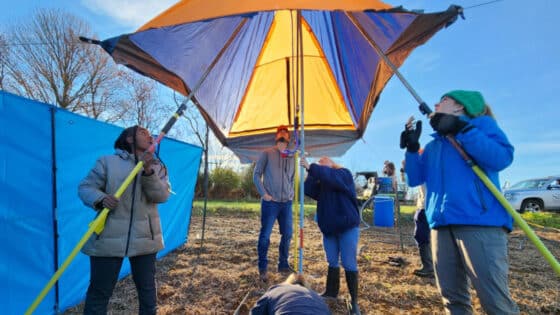Mallin M.A., M.R. McIver, S.H. Ensign, and L.B. Cahoon. 2004. Ecological Applications 14(3):823–838.
Abstract
Blackwater stream systems are the most abundant type of freshwater lotic system on the Coastal Plain of the eastern United States. Many of these ecosystems drain watersheds that receive large anthropogenic nutrient inputs, whereas some blackwater systems remain relatively pristine. A series of nutrient addition experiments was carried out over a four‐year period to assess the roles of nitrogen and phosphorus loading on the phytoplankton, bacterioplankton, and respiration of two third‐order and two fifth‐order blackwater streams in southeastern North Carolina. Stream water was distributed into 4‐L containers, amended with various nutrient addition treatments, and incubated in gently agitated outdoor pools over a six‐day period. Chlorophyll a production, direct bacterial counts, ATP, and biochemical oxygen demand (BOD) were measured as response variables. Significant phytoplankton production over control occurred in most experiments involving nitrogen additions, regardless of whether it was in the form of ammonium, nitrate, or urea. Concentrations of nitrate or a urea–nitrate combination of 14.3 μM (0.2 mg N/L) or higher increased chlorophyll a production and significantly stimulated BOD. Organic or inorganic phosphorus additions did not stimulate phytoplankton production. Combined organic–inorganic phosphorus additions of 16.1–32.3 μM P (0.5–1.0 mg P/L) significantly stimulated bacterial abundance, ATP, and BOD on most occasions. Nitrogen inputs stimulate blackwater stream phytoplankton growth, which in turn dies and decomposes in deeper, higher order streams, becoming sources of BOD and lowering dissolved oxygen (DO). Phosphorus inputs directly stimulate bacterial growth, increasing BOD, and lowering stream DO. Thus, changes in nutrient loading stimulate two different biological pathways (photosynthetic and heterotrophic activity), which in turn reduce dissolved oxygen, potentially causing hypoxic conditions stressful to resident aquatic life. The low slope, slow summer flows, and naturally low summer DO conditions make Coastal Plain blackwater streams particularly susceptible to additional DO losses through BOD formation.


